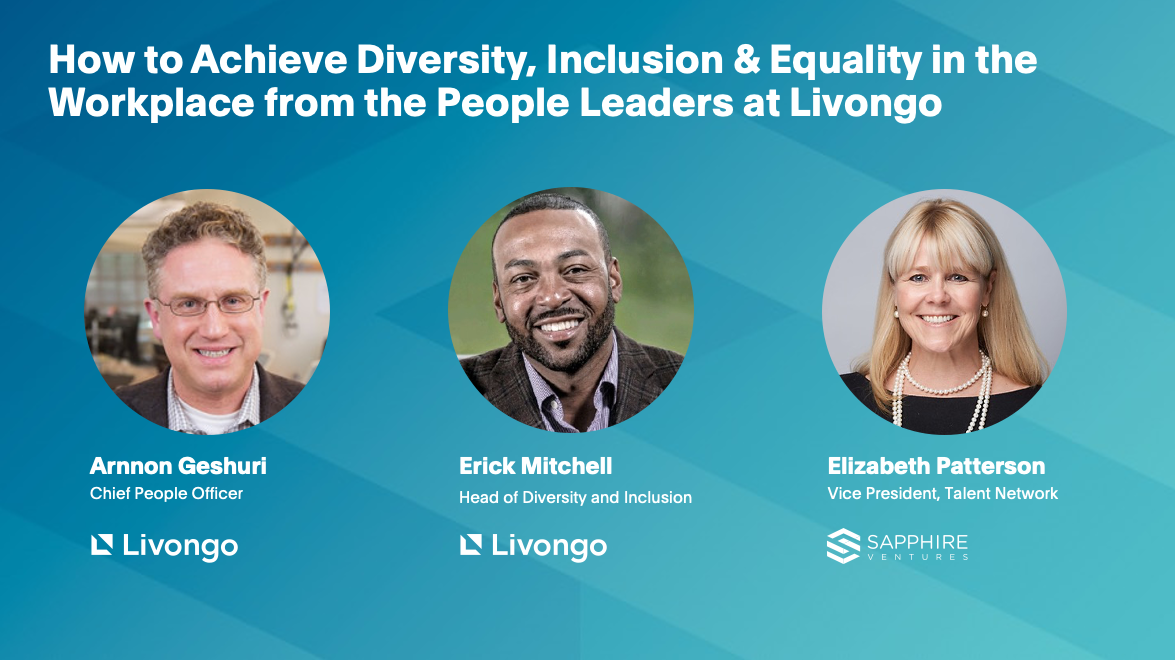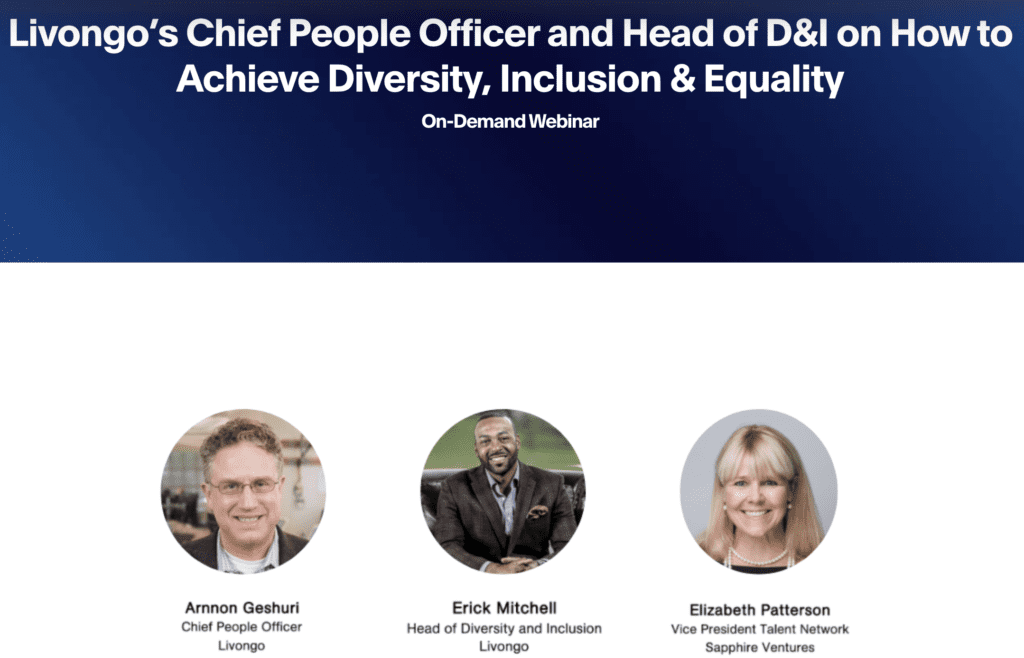When Arnnon Geshuri joined Livongo in 2017, the healthcare company had approximately 100 employees. No stranger to growth—previously a human resources leader at Google and Tesla—Geshuri guided Livongo’s workforce as it multiplied to more than 700 this year.
Livongo, a leader in chronic condition management, reached a $18.5 billion merger agreement with Teledoc Health and previously, a Sapphire investment, has been different from much of the tech sector.
While the broader tech industry has struggled to move the needle for years on changing the makeup of disproportionately white and male workers, Livongo has been able to achieve gender equality and has prioritized diversity and inclusion efforts in order to boost employee engagement and reduce attrition.
This emphasis on equality in the workplace has led Livongo to report an attrition rate of less than five percent and an employee engagement score that’s consistently around 85 percent. But the work is never done when it comes to diversity, inclusion and equality. Earlier this year, Livongo hired Erick Mitchell as head of D&I to bring his years of experience in working on ethics and diversity issues in the public and private sector to the company
Last week, Sapphire welcomed Arnnon and Erick to talk about how Livongo has been able to achieve diversity, inclusion and equality in the workplace and to share best practices for other companies who want to improve representation in their workforce.
TUNE-IN TO THIS ON-DEMAND WEBINAR
In this hour-long webinar, you’ll learn from these people leaders about how diversity, inclusion and equality can stimulate business growth and make for a stronger, better workforce. Topics include:
Diversity, inclusion and equality need a structural foundation:
Arnnon and Erick kick-off the webinar by explaining how Livongo has built its organizational practices around six core tenets:
- Fostering a culture of learning
- Encouraging the sharing of ideas
- Full leadership support, across the C-suite
- Hiring for culture add, not culture fit
- Emotionally intelligent managers that listen
- Using feedback and data to identify gaps
“When you build all six of these together, you really create the virtuous cycle,” said Erick. “It’s self-correcting and the trajectory is quite extraordinary. And then you can rest your D&I efforts on top of a healthy environment.”
Companies have to acknowledge faults and set accountable goals
Achieving diversity, inclusion and equality isn’t easy. It takes understanding where you need to improve and clear metrics that hold the entire business responsible. Erick explains how “being vulnerable and transparent” about data helped Livongo obtain gender equity. In a major step, earlier this year, the company made all of its D&I statistics available internally.
“Acknowledge where there is room for improvement,” he said, adding that companies should set accountability goals around D&I like they would around any other project. “We didn’t just talk about diversity and inclusion, we made it a corporate goal that we expected people to meet.”
Solving unconscious bias is a business imperative, but it’s only one piece:
Arnnon and Erick also address how to deal with unconscious bias, while situating it as one part of a larger set of diversity obstacles. “We look at it from a business standpoint,” said Erick. “Where could our biases be creating barriers to our relationships with clients, to us better understanding our members? From a sales perspective, could our biases be impacting the way we are reaching out to clients or even who we determine a client could be?”
Livongo, however, doesn’t tick one box and then pat itself on the back, Arnnon explained. “A lot of times companies will go in and just say, all right, recruiting: let’s do unconscious bias training, let’s check a box and we’re good,” he said. “That doesn’t work. It only addresses a small fraction of the ecosystem that you have to analyze and look at from start to finish.”
Start now!
The biggest key to diversity, inclusion and equality, according to Erick, is getting your act together immediately. “Start now. It is so much harder to change a culture, processes and norms down the road,” he added. “I understand with startups its growth, growth, growth, but make sure that your people, your organization, your culture is growing with you.”
Hear from these thoughtful leaders on diversity in technology and how any company can improve their diversity efforts. The conversation with Sapphire is presented here in full.





